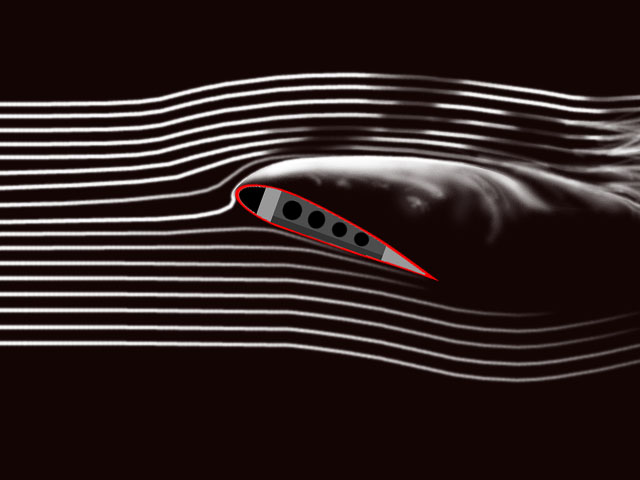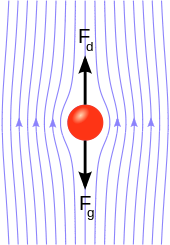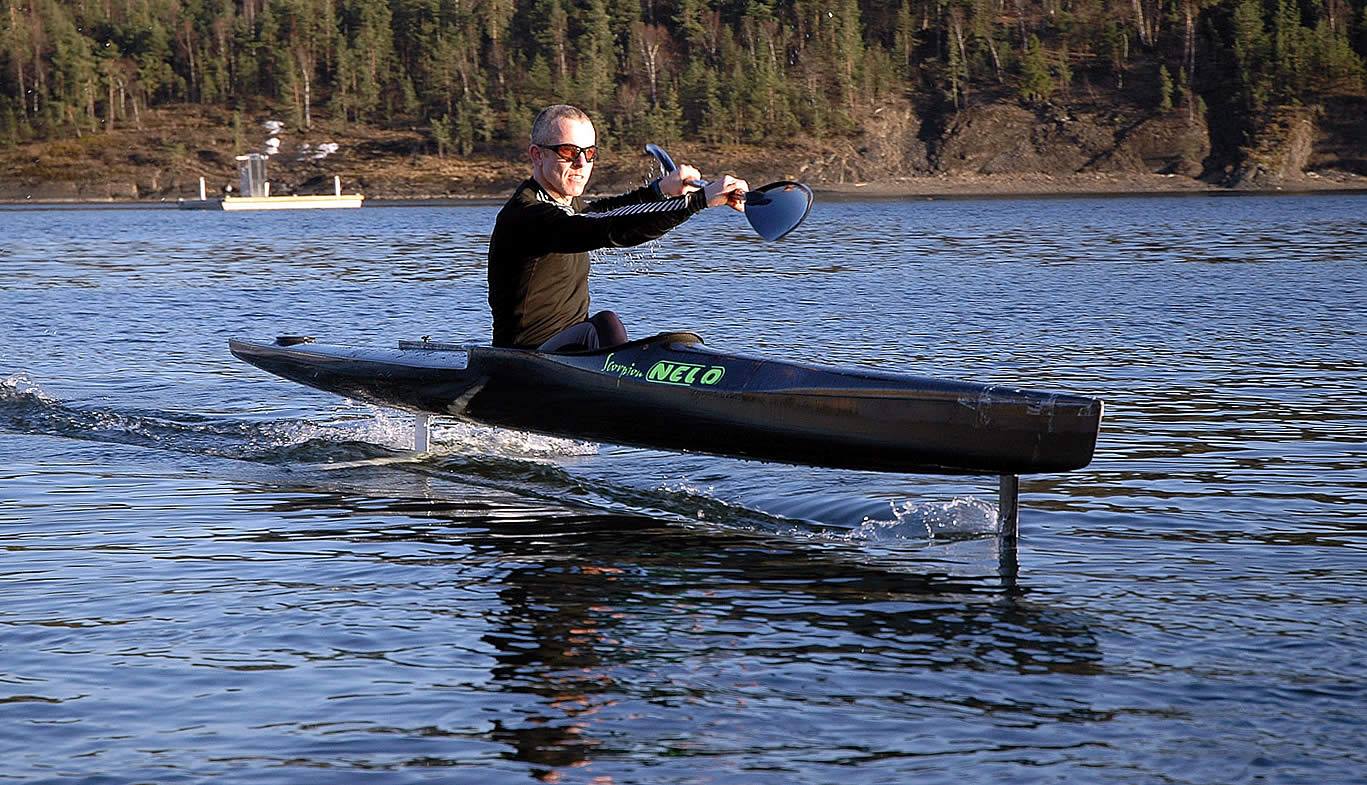How does surface finish effect boat speed and performance in kayaks?

The flow across the bottom of the wing is generally laminar, but the flow above is turbulent.
Writer: Gentoo Sports - Which boat finish is best at giving you that extra bit of free speed is an age old discussion; but what really works? And is it really worth the effort?
First up, we’ve got to get to grips with what is actually going on when your kayak is going through the water. Some water is in contact with the boat surface, and sticks to the boat by Van der Walls forces. This water gets dragged along by the boat and is not moving relative to the boat. Right next to that layer is another layer that gets pulled along, but not quite as fast, so it is moving relative to the boat. Go far enough away and the effect has stopped, there is only so much water that can be pulled along. All of this dragging water along takes energy and slows the boat down. If all of the water is flowing parallel and not starting to swirl around and be disordered, you’ve got laminar flow. Laminar flow wastes less energy than turbulent flow. There’s also wave making drag, the energy used to force the water apart as the boat moves through, creating waves, but reducing that is down to the boat design.
 In theory it would be great if you could get laminar flow along the whole length of your boat but realistically that’s never going to happen. Even racing yachts and aeroplane wings can’t manage that very well and they don’t have the problem of un even propulsion. Paddling inevitably makes the boat surge forward on the stroke and slow between strokes, you can minimise it but its going to happen. If you watch the top paddlers they generally get their boats running very smooth and flat which probably explains a small part of their excellence. On top of boat movement there’s also the paddle being placed in the the water next to the boat causing yet more disruption. All the disruption to the flow of the water over the boat takes away your chances of getting laminar flow.
In theory it would be great if you could get laminar flow along the whole length of your boat but realistically that’s never going to happen. Even racing yachts and aeroplane wings can’t manage that very well and they don’t have the problem of un even propulsion. Paddling inevitably makes the boat surge forward on the stroke and slow between strokes, you can minimise it but its going to happen. If you watch the top paddlers they generally get their boats running very smooth and flat which probably explains a small part of their excellence. On top of boat movement there’s also the paddle being placed in the the water next to the boat causing yet more disruption. All the disruption to the flow of the water over the boat takes away your chances of getting laminar flow.
Left: A sphere in Stokes flow, at very low Reynolds number. An object moving through a fluid experiences a force in the direction opposite to its motion.
So, laminar flow is out, what now? The obvious options are reducing turbulence and reducing surface tension. Adding small grooves or riblets that run the length of the boat certainly seems to get good reviews (not that they are allowed). They work by keeping the flow of water in a straight line which reduces the turbulence. More information here.
Some people have tried a slightly matt finish, scuffing the boat surface with fine sandpaper but the jury’s out. I’ve read stories of racing power boats whose owners are convinced that sanding made them faster (and when they re polished it slowed them back down) and they should be much easier to measure than a human powered canoe! But then again the theory isn’t in place to support it and there are contradictory stories all over the place with very little evidence, so who knows.
Hydrophobic or superhydrophbic surfaces sound inviting, but do they actually increase boat speed? The coating can allow an air layer to exist between the hull and the water, which can in theory reduce the drag. However, if you loose the air layer, which can be caused by too much turbulence, then you’re left with a rough surface (all the superhydrophobic coatings are rough). The rough surface in contact with the water increases drag. Even if you can maintain the air layer it isn’t clear that you actually reduce resistance anyway. As with the ribblets you’re not allowed to use it in races so there’s not too much point in worrying about it.
One additional cause of extra drag is that the boat is not going to be completely “fair” i.e. it will contain slight bumps or dimples from manufacture or bow out slightly round the seat or have flattened patches where you tired to polish out scratches. This will effect the flow of the water, creating extra turbulence. The only way you can control that is to buy a nicer, and stiffer, boat (hey, who doesn’t like a shiny new boat!).
Most of the major things that effect boat speed have been taken care of already; longer boats have higher cruising speeds and no one makes a boat that isn’t 5.2 m long (well not counting boats specifically for juniors) and keeps them as narrow as is reasonable to paddle. Some manufactures have played around with flattened sections on the hull in order to make planeing easier but they haven’t really caught on. Personally when I’ve tried them they feel great going flat out but as soon as you let the off the pace the boat drops in the water and you’re left with more wetted area and more drag than with a conventional kayak hull. Manufacturers are always working on refining their shapes to keep them ahead of the competition, for a look at what’s involved here’s a paper looking at the evolution of the Nelo Vanquish 1, 2 and 3 models. The Nelo Cinco is a bit of a departure from the designs of the last few years but we will have to wait and see if it catches on.
The best way to reduce the turbulence is to paddle smoothly and to make sure your boat is clean and smooth. Having scratches or lumps of mud on the hull will, fairly obviously, be slower than a nice clean surface. This is because even when the flow is turbulent there is still a thin layer right next to the boat that is behaving like laminar flow (called the laminar sub layer), and any imperfections protruding out from this layer will increase the drag. For this reason I think it is quite reasonable and sensible to T-Cut your boat, and if there are scratches in the hull then polishing them out will be worth while if you can manage to do a good job of it.

Personally I find it a bit of a shame that the sport chooses to restrict development. Competition is a great motivation for innovation and it would be fantastic to see new developments come out of the canoe and kayak world. Kayaks with hydrofoils have been made but I wonder what other innovations would emerge if they were encouraged. I guess at least you know you just need to get better at paddling rather than invest masses in a secret boat design to win! Or maybe you need to think about the aerodynamics…





